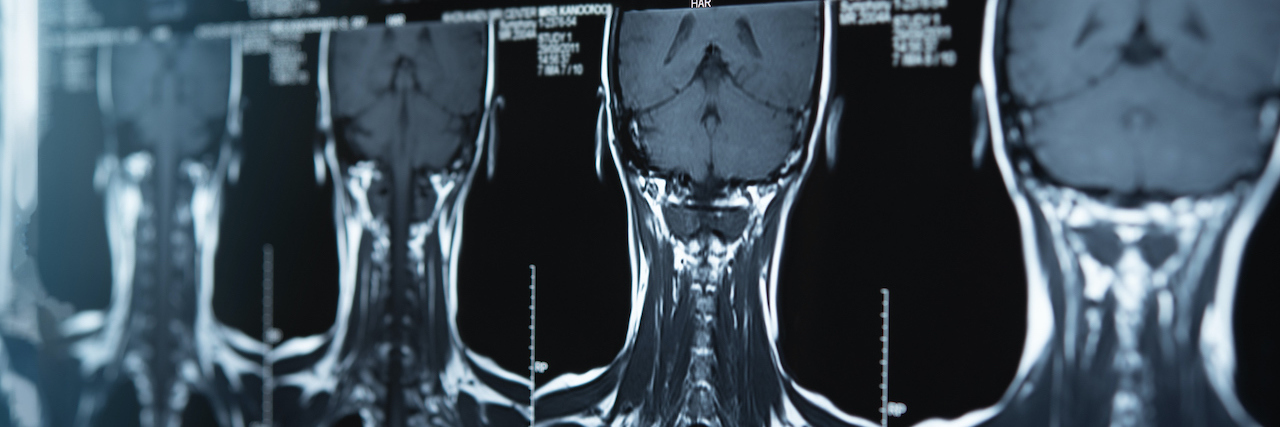The Moment Before Your Child's Results Come In
We wind our way up the parking ramp at Children’s every six months. After parking, we make the long trek on foot through the skywalk, through the clinics building and to the farthest end of the hospital. Trepidation builds with each footstep. They may as well pipe in Berlioz’s “March to the Scaffold” from Symphonie fantastique to accompany our walk to the Orthopedic department.
When we arrive we start with X-rays which only take a few moments because we are now pros. We wait to be called back to a room where we see a nurse, a PA and the doctor separately in that order. Sometimes a medical student or a resident tags along as well. The PA pulls up the X-rays on the computer screen, opens up the measuring tool and clicks in rapid fire while plotting points on the photo of their spines.
We all hold our breath and think, “Does it look the same as the X-rays taken six months previous? It looks a little worse, but how much worse?”
She turns, smiles and says the doctor will be right with us without commenting about the X-ray.
The doctor arrives with smiles and handshakes for everyone (pre-COVID, of course). He settles into his seat and begins clicking furiously as he adjusts the measuring tool. Our anxiety surges. He announces the verdict.
My younger son’s curve is still very mild, less than 10 degrees. My older son’s is over 30 degrees as before but not much worse. Only a few degrees worse.
We exhale in unison. We have been granted a stay. We have a little bit longer until we face the thing we fear the most. We hold it together until the doctor leaves. Then, sometimes, my older son starts to cry. Usually when the curve has gotten more than 5 degrees worse.
He knows what’s coming. We all do. And we all dread that day more than anything else. The day the doctor decides it’s time. Time to schedule the surgery.
It’s not a matter of if but of when. The statistic is indisputable — the majority of those affected by SEPN1/SELENON-related myopathy have spinal fusion surgery at some point in their life. A surgery so complex that it will require consulting doctors from other states, a long hospital stay, a leave of absence from work and school, and long arduous days and months of healing.
We will return to this place again, hoping for another extension. All the while knowing, inevitably, the other shoe will drop. There is very little we can do to stop it.
Follow this journey on Our SEPN1 Life.
Getty image via utah778

